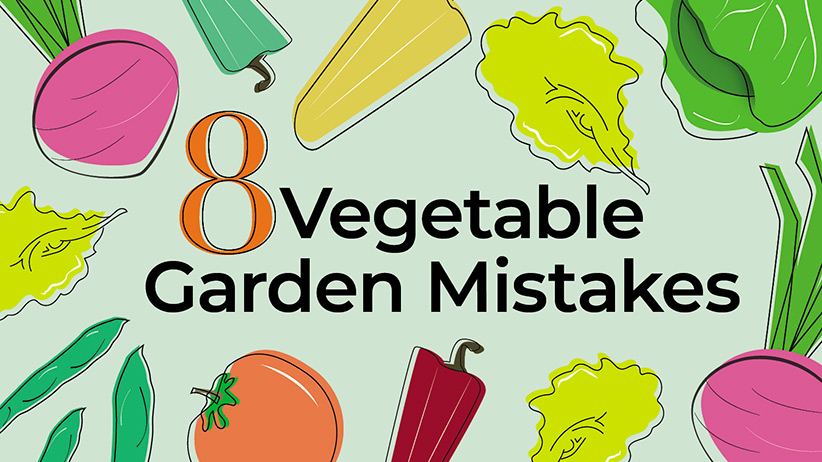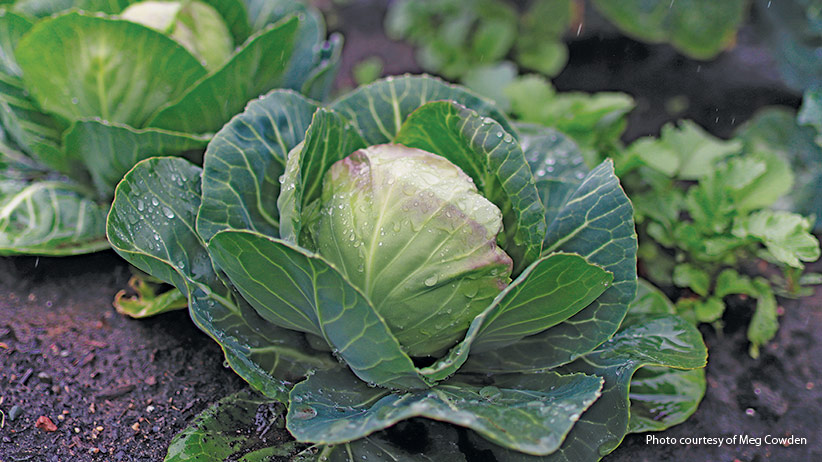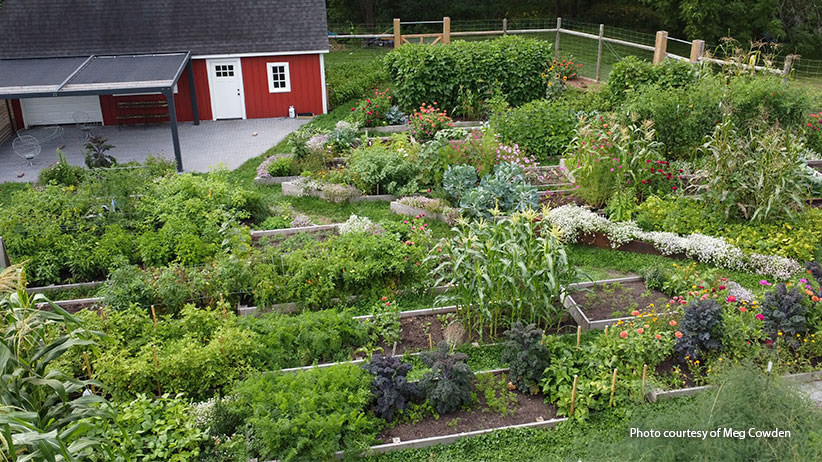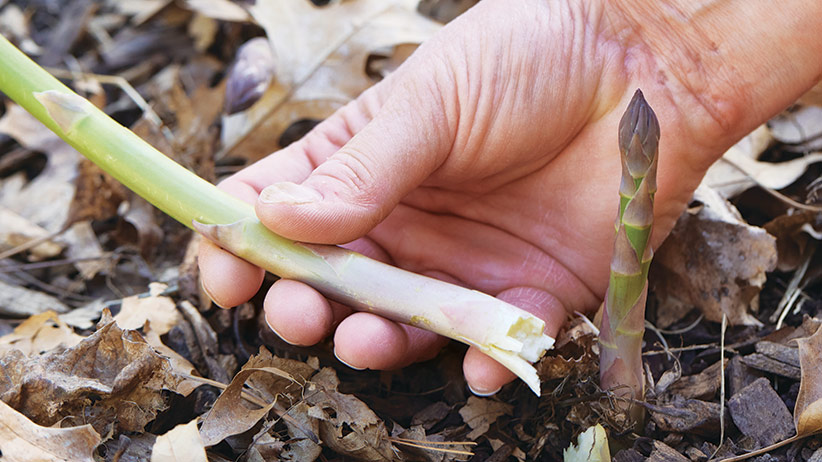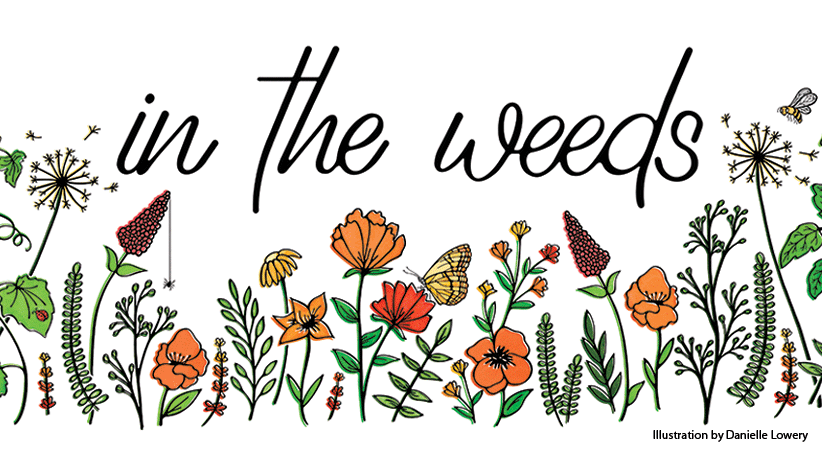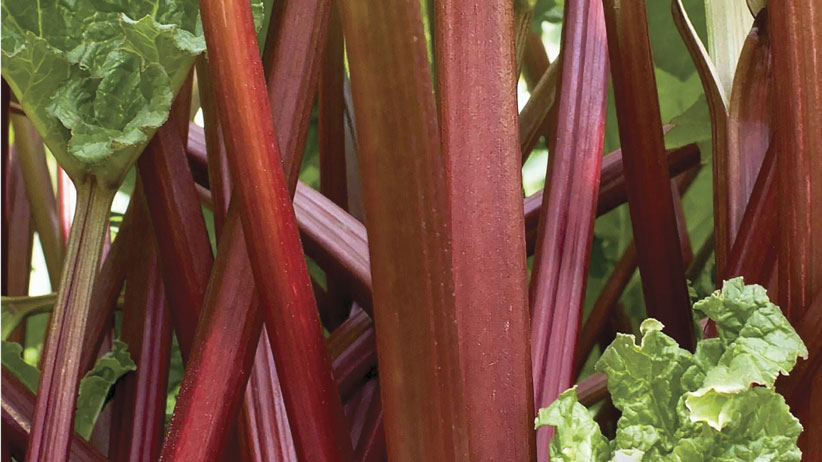Common vegetable garden mistakes
Even though my first tomato plant only yielded four tomatoes, I was hooked and determined to do better the next year. Since then, I’ve had a lot more successful harvests, but also made plenty of mistakes over the years. If you’ve ever been disappointed in your vegetable garden crops, fixing a few simple techniques could make all the difference! Here are some of the things I wish I’d known sooner.
1. Tilling your vegetable garden every year
Did you know that when you till the garden every year, you disrupt beneficial micro-ecosystems that help keep your garden healthy and free of diseases and pests? It also damages soil structure, which can lead to compacted soil that makes it harder for roots to absorb oxygen and water.
Try no-till practices
When you’re establishing a new vegetable garden, you might want to till in amendments like compost or manure to get it started. But after that, only digging the holes and rows for the plants or seeds is better for the soil. Try top dressing with mulch or compost every year to continue to add organic matter and improve soil fertility and structure. This helps create healthy garden beds that are ready to be planted in at the beginning of every season without much work on your part. Consider making permanent walkways and paths through the garden to prevent compaction from foot traffic.
2. Not amending garden soil
Not only can skipping soil amendments cause spindly plants and yellowing leaves, but it can also decrease your harvest. The good news is that this is totally fixable!
Test your vegetable garden soil and add nutrients
Soil testing is a great place to get started and it helps you figure out what type of soil you have and which vital nutrients may be missing. This way you can tailor your amendments to your plants’ needs. Adding compost or manure to the top layer of soil can give your garden the boost it needs. Apply soil amendments at the beginning and end of the growing season so that nutrients will begin leaching into the soil and feeding your plants as soon as you begin watering.
You Might Also Like:
Helpful Vegetable Gardening Products
Straw Bale Gardening
Organic Products for Your Garden
Small Vegetable Garden Ideas
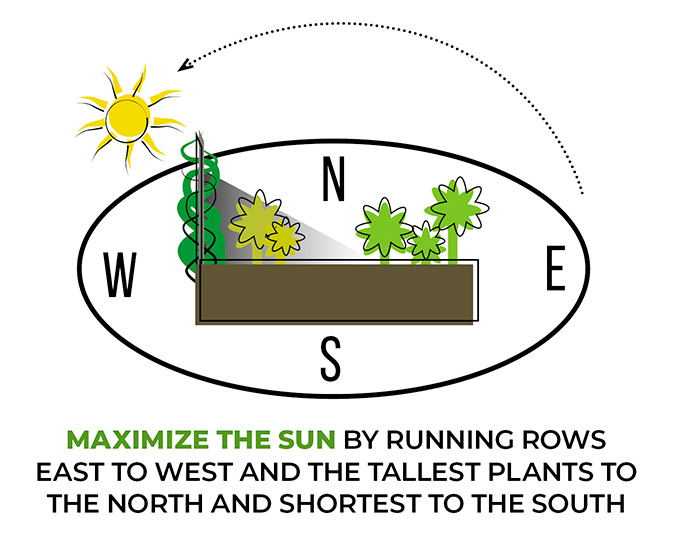
3. Not planting your vegetable garden in enough sunlight
Ever wonder why you only got a few tomatoes off of one plant instead of the bushel baskets you were dreaming of? Maybe you made the same mistake I did in my first year and planted them in too much shade.
Do a site analysis
To find the best spot in your yard, keep track of the amount of sun hitting different spots in your garden at different times throughout the day. Most vegetables need 6 to 8 hours of strong sun each day to produce their best. A few, such as Brussels sprouts, cabbage, pole beans and root vegetables, can get by with only 4 to 6 hours of sun.
Also, be sure that your tall plants aren’t accidentally casting shade on shorter ones. When you plan your rows, maximize the sun hitting everything by running rows east to west and the tallest plants to the north and shortest to the south, as shown in the illustration above. This ensures that the corn or tall tomatoes won’t shade out the smaller peppers nearby for part of the day.
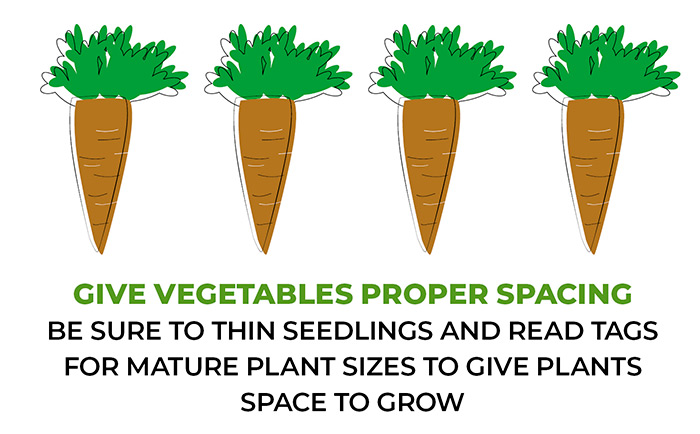
4. Not thinning seedlings
It’s hard to make yourself thin perfectly healthy seedlings. And it’s also difficult to imagine in May that the little tomato you’re putting in the ground will turn into a sprawling monster by August. But that definitely happens. Plants need room to grow or they won’t produce as well (or they might just crowd out their neighbors!).
Be sure to read seed packets and plant tags for important growing information
Most seed packets recommend sowing seeds thickly in the garden, then thinning the seedlings to give them room to grow once they’ve germinated. Don’t skip this step — leaving them crowded will just stunt every seedling’s growth. And instead of planting according to the size the plants are when you bring them home from the store, read tags to learn what the mature size will be and plant them spaced far enough apart to accommodate this. Research the sizes and plan before you go to the garden center in spring and you can avoid bringing home too many plants and trying to cram them all in.
5. Skipping mulch in the vegetable garden
If I don’t get around to mulching, I always regret it midway through the summer. Without mulch, a garden needs more water, is more susceptible to heat and has more weeds.
Mulch your garden in spring
Add an inch or two of mulch on top of the soil after you have finished planting your vegetable garden. Just make sure you don’t cover up any seedlings that will need light to emerge. Wheat or oat straw and chemical-free grass clippings are the best options for mulching vegetable gardens. Budget-friendly grass clippings and straw break down in the soil relatively quickly, adding an extra layer of organic matter. Be careful not to use too thick a coating of grass clippings at a time as they can hold moisture that invites mold and decay, which can create a smelly situation.
You Might Also Like:
Are You Using the Right Type of Mulch?
How to Build a Keyhole Garden Bed
Front Yard Vegetable Garden with Curb Appeal
Companion Plantings that Really Work
6. Letting weeds take over your vegetable garden
We’ve all been there: The garden gets a little wild, and weeding becomes an overwhelming task. Weeds compete with vegetables for nutrients, light and water and some even attract pests and diseases.
Control the weeds
In addition to mulching, putting down landscape fabric also helps prevent weeds from emerging without blocking air and moisture to the soil. It’s especially helpful to place it in paths between rows, or you can spread it over vegetable garden rows and cut holes in which to plant. To fight weeds, you might also choose to use a pre-emergent herbicide, such as corn gluten meal, which inhibits seed germination. Just know that it prevents everything from germinating, so wait until your seedlings are up and growing before you spread it.

7. Overhead watering squash, cucumbers or tomatoes
Overhead watering isn’t the most efficient way to irrigate any plant because so much can evaporate, but it is especially problematic on these crops. That’s because squash, cucumbers and tomato plants are easily susceptible to fungal diseases, which thrive on wet leaves.
Water at ground level
Irrigate squash, cucumbers and tomato plants at the base, whether you hand water or use a soaker hose or drip irrigation. Do it in the morning so any leaves that do get wet will dry quickly and plants will have plenty of moisture reserves going into the heat of afternoon.
You Might Also Like:
Tomato Plant Problems
Home Remedies for Fungal Diseases in the Garden
8. Skipping fall vegetable garden cleanup
While it is true that there are benefits to leaving plants standing over the winter, the vegetable garden isn’t the best place for this practice. If you’re not removing plants at the end of the growing season in fall, their decomposing debris is likely to create a home for pests and pathogens, which vegetable gardens are especially susceptible to. And it means you’ll be spending time cleaning up in spring when you really just want to be planting!
Clean up vegetable garden beds in fall
After the plants in your garden have completed their life cycles in fall, pull them and toss them in your compost pile (unless they are diseased). Roots of legumes like garden peas and beans can be left in the ground because as they decompose, they release nitrogen into the soil. So clip these plants at the base instead of pulling them. Once all that’s done, spread a layer of chopped-up leaf mulch over the beds to add a layer of organic matter and provide shelter for beneficial insects over winter.



